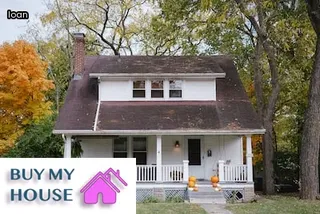In Oklahoma, the foreclosure process can be lengthy and complicated. It is important for homeowners to understand the laws and procedures associated with foreclosure in the state.
Foreclosure begins when a lender files a lawsuit against the homeowner for missing mortgage payments. The homeowner must then respond to the suit within a certain amount of time, or else they will be in default.
From there, a court hearing is held to determine if foreclosure is appropriate. If it is, then the property is listed for sale and advertised publicly.
Potential buyers are able to submit offers on the property, and if accepted by the lender, can purchase it at auction. Once sold, any remaining debt owed on the house must be paid off by the homeowner before they can receive their share of any proceeds from the sale.
As this process can take several months or even years to complete, it is important that homeowners familiarize themselves with Oklahoma foreclosure laws in order to protect their rights throughout this difficult process.

In Oklahoma, the foreclosure process begins when a homeowner misses a mortgage payment. The lender will then send out a notice of default, which is an official notification that the homeowner has failed to keep up with payments and needs to make them current.
From there, the lender must file a lis pendens (notice of pending action) in the county courthouse where the property is located. This document serves as public notice that foreclosure proceedings have begun.
Once this happens, the borrower must be notified in writing of the intention to foreclose and given at least 30 days to respond. During this period, if any payments are made, foreclosure proceedings may be stopped and/or delayed.
If no payments are made during this period, the next step is for the lender to file for a judicial foreclosure in court and obtain a judgment from a judge ordering the sale of the property. After that, it typically takes another 30 days for a buyer to purchase the property at auction.
If no buyer is found or all bids fall short of what’s owed on the loan balance, then ownership will transfer back to the lender who can then proceed with their own sale or other options such as renting it out or demolishing it altogether.
The foreclosure process in Oklahoma can be a daunting and confusing task for many homeowners. It is important to understand the length and all the steps involved when it comes to facing such a situation.
Typically, foreclosure proceedings begin with the lender filing a complaint in court against the homeowner, asking them to pay what they owe or face foreclosure. The homeowner then has 20 days to answer this complaint and if they fail to do so, the court will issue a default judgement.
After that, an Order of Sale is filed by the lender which allows them to sell the home at auction. This typically takes 30-45 days from the date of filing.
A notice of sale will then be published in local newspapers for three weeks before it goes ahead. Finally, after all these steps are complete, the property will go up for auction and sold to the highest bidder.
It is essential for homeowners facing foreclosure to understand each step of this process in order to protect their rights and make informed decisions throughout it.

In Oklahoma, homeowners facing foreclosure have certain rights that are protected by state law. It is important to understand these rights in order to protect yourself and your property.
As soon as the bank sends a notice of default, you have 45 days to respond. During this time period, the homeowner can negotiate with their lender to find an alternative solution such as loan modification or forbearance agreement.
Additionally, a foreclosure cannot proceed until the homeowner has been served with a summons and complaint in person or by certified mail. The homeowner then has 30 days from the date of service to file an answer in court to dispute the foreclosure action.
It is also important for homeowners to be aware of their right to receive a deficiency judgment from the lender if their home sells for less than what was owed on it at the time of foreclosure. Knowing these rights is essential for any Oklahoma homeowner facing foreclosure so they can make informed decisions about how best to protect their property and finances.
When it comes to stopping a foreclosure in Oklahoma, homeowners should take certain steps to ensure the process is as short as possible. Firstly, they should contact their mortgage lender as soon as they become aware of any potential issues.
This will help them understand what options are available and how long the foreclosure process could take. Additionally, homeowners can look into refinancing their loan or applying for a loan modification.
If a homeowner is unable to make payments, they may be eligible for a forbearance or repayment plan that can help reduce monthly payments and put them back on track with their mortgage lender. In some cases, bankruptcy might also be an option that can stop the foreclosure process in its tracks.
Ultimately, understanding the options and taking action quickly is essential when trying to prevent a foreclosure in Oklahoma.

When a homeowner in Oklahoma is facing foreclosure, the process can seem daunting and intimidating. Although it is typically a lengthy process, there are steps homeowners can take to avoid having a deficiency judgment added to their debt after foreclosure.
A deficiency judgment is an amount of money that remains due to the lender if the proceeds from the foreclosure sale do not cover the debt owed by the homeowner on their mortgage. The first step for homeowners to take is to understand their rights and responsibilities under Oklahoma law.
Homeowners should also be aware that lenders have certain deadlines they must meet in order to get a deficiency judgment, such as providing a written notice within five days of the foreclosure sale and filing suit within three years after the date of sale. Additionally, homeowners may be able to negotiate with their lender to waive any unpaid balance owed or reduce it significantly.
Finally, seeking legal advice from an experienced attorney in Oklahoma may help determine what options are available and how best to protect oneself from a potential deficiency judgment after foreclosure.
When homeowners in Oklahoma are looking for assistance with the foreclosure process, there are a variety of resources available. The U.
Department of Housing and Urban Development (HUD) provides free counseling to homeowners facing foreclosure, which can help them understand their rights and options. Additionally, state agencies such as the Oklahoma Mortgage Bankers Association provide access to information on loan modifications, mortgage refinancing, and other forms of foreclosure prevention measures.
Homeowners may also be able to work with lenders directly to negotiate a payment plan that works for both parties. A lawyer can also provide advice on how to proceed with a foreclosure situation and what legal steps need to be taken.
It is important for those facing foreclosure in Oklahoma to research all of their options before making any decisions, so they can make the most informed choice possible.

Mortgages are a common way to purchase a home in Oklahoma, and the state has specific regulations in place to protect borrowers. Before taking out a loan, it is important for borrowers to understand the process and the laws that govern mortgage loans in Oklahoma.
The interest rate of a loan must be disclosed to the borrower, as well as any fees or other costs associated with the loan. Additionally, lenders must provide written notice of any changes to the terms of the loan, such as an increase in interest rates or additional fees.
To protect against foreclosure, Oklahoma law requires lenders to provide homeowners with at least 30 days' notice before filing suit and entering into foreclosure proceedings. Understanding this timeline is essential when considering foreclosure proceedings in Oklahoma, and can help ensure that you have enough time to make alternative arrangements if needed.
When a homeowner in Oklahoma misses a mortgage payment, they immediately enter the foreclosure process. As soon as a payment is missed, the lender will contact the borrower to discuss options for catching up on payments or avoiding foreclosure altogether.
If these solutions are not implemented, then the lender will follow Oklahoma foreclosure law and begin legal proceedings to reclaim the property. The typical timeline for a foreclosure in Oklahoma can vary greatly depending on the homeowner's situation, but generally it takes around six months from start to finish.
During this time, lenders must adhere to a strict set of rules that govern how they can move forward with collecting payments or repossessing property. Homeowners should understand their rights during this process and be aware of any updates to Oklahoma's foreclosure laws that may affect their case.

When it comes to foreclosure proceedings in Oklahoma, the process begins when a breach letter is sent to the homeowner. This letter informs the homeowner that they are in default of their mortgage agreement and must take action to rectify the situation by making past due payments or otherwise addressing the issue.
If this does not occur within a specified timeframe, typically 30 days, then foreclosure proceedings may begin. The breach letter serves as an official notification that legal action is being taken against them and gives them an opportunity to avoid foreclosure altogether.
In some cases, lenders may also be willing to work with homeowners directly and can provide assistance in resolving matters outside of court if possible. Either way, understanding how breach letters and the start of foreclosures relate to one another is key in unraveling just how long it takes for a foreclosure process to complete in Oklahoma.
In Oklahoma, the rules and regulations surrounding judicial foreclosures must be carefully followed. The foreclosure process begins when the lender files a Summons and Complaint in court to start the proceedings, after which the borrower is served with all necessary documents.
After being served, the borrower is given 20 days to answer the complaint; if they fail to do so, a default judgment will be entered in favor of the lender. If an answer is filed within the allotted time frame, then both parties are required to attend a hearing in order to resolve any disputes and negotiate a settlement agreement.
The court may also require mediation sessions between both parties if it deems it necessary. Once an agreement has been reached or a judgment has been issued, the foreclosure process moves on to a sheriff sale where the property is sold off for its total balance of unpaid debt.
Afterwards, the borrower has 30 days in which to redeem their property or else it will become unredeemable by law. Through these steps, lenders can legally reclaim their loan payments from borrowers who have failed to meet their obligations.

The foreclosure process in Oklahoma is a nonjudicial one, meaning that it does not require the involvement of the court system and instead is handled by a third-party trustee. Generally, this process starts when the lender provides written notice to the borrower that they are in default and must pay all past due amounts within 30 days or face foreclosure proceedings.
If payment is not made within that time frame, the trustee will schedule a sale date for the property. On this date, any interested parties may bid on the home and if no bids are received, the lender acquires title to it free and clear of any liens or encumbrances.
Within 30 days following the sale date, the trust deed must be recorded with the county recorder’s office to provide notice of who owns title to it. This recording also serves as public notice of how long Oklahoma’s foreclosure process takes from start to finish.
Once a foreclosure judgment has been issued in Oklahoma, the lender can pursue an auction sale to reclaim the property. After the court issues a foreclosure judgment, the home is sold at public auction by either a county sheriff or a court-appointed Commissioner.
To initiate the process of an auction sale, the lender must file with the court a request for appointment of a Commissioner and for an order of sale. The request must include information about how much is owed on the loan and how much money is being sought in the sale.
A notice of sale must then be published in two different local newspapers over four weeks and posted at least 20 days prior to the date of sale. On that date, bids will be taken from any interested buyers who meet the requirements set forth by law, including paying at least two-thirds of the amount owed in cash or certified funds on closing day.
If no bid is received that meets this requirement, then it reverts back to ownership by the lender.

The length of the foreclosure process in Oklahoma varies depending on the type of foreclosure, the lender's timeline and the borrower's cooperation. In a traditional foreclosure, which is often used when homeowners are behind on their mortgage payments, the process can take several months.
After a homeowner falls behind on a loan payment, their lender will typically file a Notice of Default with the county recorder. The Notice of Default officially begins the foreclosure process and must remain active for three months before any further action can be taken.
During this time, lenders may attempt to work out some sort of payment arrangement with borrowers or offer them alternatives such as loan modifications or short sales. If none of these options are successful or accepted by borrowers, their lender can then move forward with an auction sale.
This is when a third party purchases the property at public auction and is likely to occur anywhere from 3-12 months after filing of the Notice of Default. Some lenders may choose to forego an auction sale and instead pursue a deed in lieu of foreclosure option where they take over ownership rights to property without ever going through an auction sale.
In those cases, it could take less than 6 months for a foreclosure to be completed while traditional foreclosures typically last between 8-18 months before completion.
The foreclosure process in Oklahoma is a lengthy and complicated procedure that requires understanding of the legal language and knowledge of the laws governing foreclosures. The process begins with the lender's filing of a Notice of Default, which is an official document that states the borrower has failed to make payments on their mortgage loan.
This triggers a 90-day period known as the Pre-Foreclosure Period, during which time the borrower may attempt to cure their default and retain ownership of their home. If they cannot do so by this time, then they enter into what is known as the Foreclosure Process.
During this period, the lender will file a Summons and Complaint with the local court system, where it will be served upon the borrower. After this step is complete, there is typically a 30-day waiting period for a response from either party to the lawsuit.
If no response is received by this time, then a Default Judgment may be entered against the borrower in favor of the lender. Once this has been done, an Order of Sale will be issued and a date set for auctioning off the property in question.
Finally, if all goes according to plan, ownership of that property will transfer from borrower to new owner at auction or sale. Understanding these steps can help you navigate through what can be an overwhelming process when facing foreclosure in Oklahoma.

In Oklahoma, it depends on the type of loan and applicable laws. Generally, the foreclosure process can begin after a borrower has missed three to four payments.
The exact length of time and number of missed payments required before foreclosure proceedings can begin may vary depending on the specific terms of your loan, as well as state law. If a lender chooses to pursue foreclosure in Oklahoma, they must send a Notice of Default to the homeowner.
Once the Notice is received, homeowners have three months to pay off their delinquent mortgage or find an alternative solution with their lender in order to stop the foreclosure process from continuing. If these solutions are not found within three months, lenders can begin foreclosure proceedings by filing a Notice of Sale with the court.
This document officially begins the foreclosure process and sets up a sale date for when buyers will submit bids for buying the property at auction. Oklahoma law requires that properties be sold at public auction and that homeowners receive notice of this auction at least 20 days prior to sale.
In Oklahoma, the average foreclosure process takes approximately 6 months from start to finish. The amount of time it takes to officially enter foreclosure largely depends on how many payments are missed and how long a homeowner is delinquent on their mortgage payments.
Generally speaking, homeowners in Oklahoma must be at least two months behind on their mortgage payments before they can be considered for foreclosure proceedings. This means that if you fail to make three consecutive payments for your mortgage, you could potentially be facing a foreclosure process in as little as five months from the time of your missed payment.
It is important to note that any additional past-due fees or late charges may add more time to the length of the foreclosure process, so it is best to try and catch up with your payments as soon as possible.
After a sheriff sale in Oklahoma, the borrower has up to two weeks to redeem their property by paying off all past due amounts plus any associated costs and fees. Once the redemption period is over, the buyer at the sale will be issued a sheriff deed, which conveys ownership of the property to them.
The sheriff deed must also be filed with the local county clerk's office before it can take effect. After this, an eviction notice will be served to the former owner of the property if they are still occupying it.
The eviction process can take several weeks or even months depending on court proceedings. As part of this process, an official court order may be issued for removal and seizure of personal items left on the premises.
At this point, a new title search may be conducted to ensure that there are no outstanding liens or other claims against the property before it is officially transferred to its new owner.